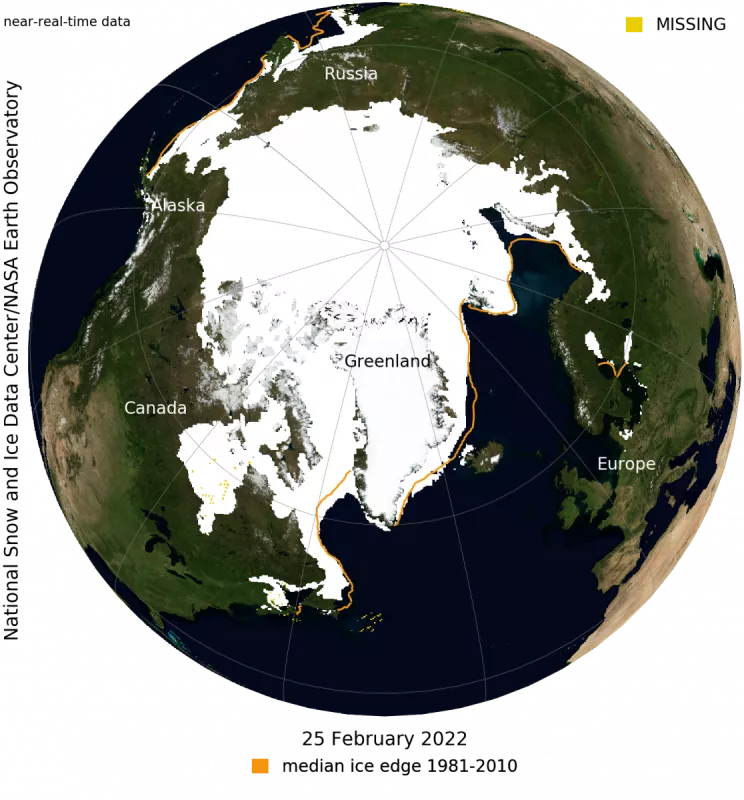Arctic sea ice has likely reached its maximum extent for the year, at 14.88 million square kilometers (5.75 million square miles) on February 25, according to scientists at the National Snow and Ice Data Center (NSIDC) at the University of Colorado Boulder. The 2022 maximum is the tenth lowest in the 44-year satellite record.
Please note that the Arctic sea ice extent number is preliminary—continued winter conditions could still push the ice extent higher. NSIDC will issue a formal announcement at the beginning of April with full analysis of the possible causes behind this year’s ice conditions, interesting aspects of the growth season, the set up going into the summer melt season, and graphics comparing this year to the long-term record.
The US National Ice Center (USNIC) also tracks the Arctic maximum extent with slightly different values that are based on their data sources, and NSIDC’s estimate is corroborated by USNIC. Find their press release here.
For more details and images, please see the NSIDC Sea Ice Today page.
Read the NASA feature here.
NSIDC is part of the Cooperative Institute for Research in Environmental Sciences (CIRES) at the University of Colorado Boulder. The NSIDC Sea Ice Today is supported in part by NASA.
